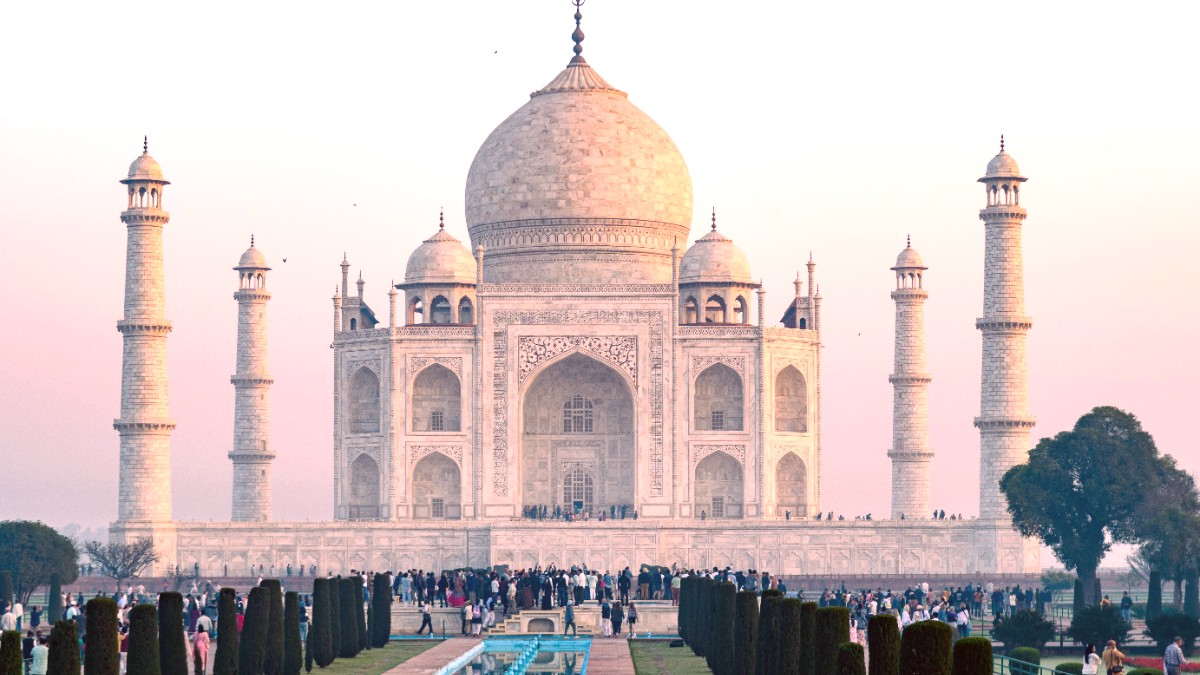
Uttar Pradesh, India
Agra presents more than this single, breathtaking view. It is a city where history breathes through ancient forts, intricate tombs, and bustling bazaars. The scent of street food mingles with the aroma of spices, and the rhythm of daily life unfolds around monuments that have stood for centuries. Every corner can present a story, a flavor, or a scene that connects visitors to a deep cultural heritage. Prepare to step into a place where past empires meet contemporary life, creating an experience unlike any other.
Agra sits on the western bank of the Yamuna River, within the northern Indian state of Uttar Pradesh. The city lies within the vast Gangetic Plain, a fertile region noted for its flat terrain.
Its placement on a major river historically yielded a water source and a strategic location for trade and defense, which contributed to its status as a powerful imperial capital. This flat expanse also allows for unobstructed views of its famous landmarks, especially from riverbanks or elevated points within the city.
Agra’s historical narrative deeply intertwines with the rise and splendor of the Mughal Empire. The city served as the capital of this powerful dynasty for centuries, starting with Emperor Babur in the early 16th century. It blossomed under his successors, notably Akbar, Jahangir, and Shah Jahan, each adding to its architectural and cultural heritage.
The peak of Agra’s historical prominence arrived with Emperor Shah Jahan, who ruled in the mid-17th century. His profound affection for his wife, Mumtaz Mahal, led to the construction of the Taj Mahal, a marble mausoleum that goes beyond architecture to become a global emblem of devotion. This period marked a high point of Mughal art, architecture, and garden design.
Established the Mughal dynasty in the early 16th century.
Known for administrative prowess and commissioning the Agra Fort.
Continued the architectural and cultural expansion of the city.
His reign saw the creation of the Taj Mahal.
City became a fusion of Persian, Central Asian, and Indian cultures.
Agra is a city that presents a blend of historical grandeur and everyday Indian life. At its core stands the Taj Mahal, a marble masterpiece that commands attention. Visitors often start their exploration here, captivated by its symmetry and intricate details. Close by, the formidable red sandstone walls of Agra Fort invite discovery, revealing palaces, mosques, and courtyards that recount tales of emperors and empresses.
The city’s bazaars, like Sadar Bazaar and Kinari Bazaar, brim with activity, offering local crafts, leather goods, traditional clothing, and jewelry. Here, one experiences the rhythms of local commerce and finds authentic mementos.
The culinary scene in Agra mirrors its Mughal past, with rich, aromatic dishes alongside popular street foods. Sampling the local "Petha," a famous sweet, marks a tradition for many visitors.
Agra combines its world-renowned heritage with an immersive cultural experience, making it a destination that captivates the senses and leaves a lasting impression.
A journey to Agra is incomplete without visiting its grand monuments, each a testament to a bygone era.
These sites are not just structures; they are stories etched in stone, inviting visitors to step back in time and appreciate the artistry and ambition of the Mughal Empire.
A global emblem of love, known for its pristine marble and intricate inlay work.
A massive red sandstone fortress, once a royal residence and military stronghold.
An abandoned Mughal city, noted for its unique architectural style and timeless feel.
Optimize your experience by considering timings and local guidance for these major attractions.